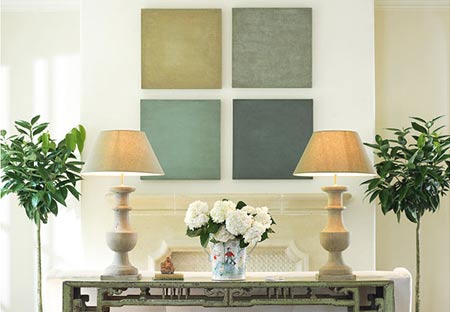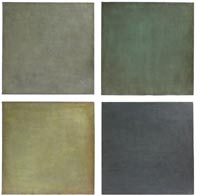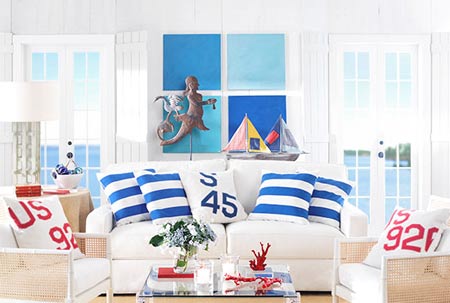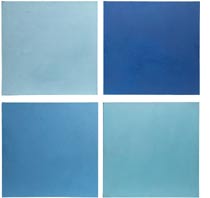Colour block a wall
If you're still afraid to experiment with colour in your home, here's a way to add small amount of colour and make a big impact ...
Colour blocks allow you to play around with colour in a small way. It's also an inexpensive way to introduce colour into a home by using tester pots to create colour blocks. There are endless possibilities for creating a focal point, highlighting a particular area, or simply adding extra colour to a bland space. Choose colours that are already in a room, or select colours that you would like to introduce into a room but you're not sure how they would work.
Colours blocks don't have to be square
Imagination is the only limit when it comes to colour blocking. Shapes vary from stripes, rectangles, squares, circles or a mix of several. If you're using more than one tone, you can place shapes side by side or even have them overlapping. Plan your colour blocks to accentuate and add impact to an area by placing them behind furniture.
How to start
1. Decide on the size and shapes that you would like to use for the arrangement. I particularly like squares as this gives me an arrangement that I can use almost anywhere. A good size to work with is 300 x 300mm, but you can make them larger or smaller if you wish.
2. Choose the colours that you want to use for the blocks. These can be colours that are already in the room, colours from a favourite artwork , or colours that you would like to introduce into a room. If you can't find tester pots in the colours that you want, you can also use acrylic craft paints.
3. Draw the designs onto the wall and mark off with masking tape. If walls are not completely smooth you will have to allow for a small amount of bleed under the tape. This is easily rectified by using an artist's paintbrush to touch up once the masking tape is removed.




